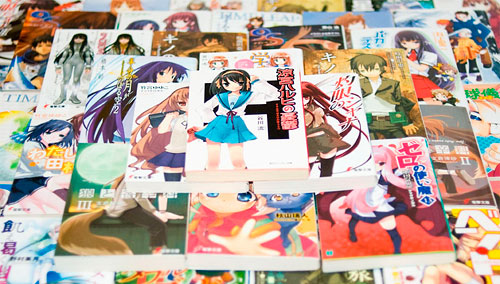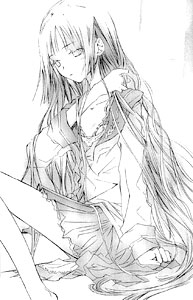

Light Novels: IntroductionThe name "Light Novels" was coined some 20 years ago on an electronic forum, when the administrator wanted a way to collectively refer to paperback novels that were aimed at youngsters and quick to read. The definition remains vague, but the books often share some common elements: they're around 250 pages, they have manga style cover illustrations, and the intended audience is young adults. Over time the boundaries have grown even hazier, and nowadays you can find all kinds of literature being called light novels, as some titles have been republished with new covers as "proper" literature (12 Kingdoms), while old classics conversely have gotten new editions with manga illustrations (Ningen Shikkaku). The most apparent difference from regular literature is the abundance of illustrations in most light novels. Every 20 pages or so there will be a grayscale illustration depicting a scene that is taking place, while the covers are colourfully eye-catching to attract buyers browsing the bookshop shelves. The influence of the artist can be massive in light novel publication, as there are certain types of customers who go around picking things to read solely based on the illustrated goodness found inside. With the huge amount of anime and manga adaptations based on light novels, it can also have an effect on character design and, as a consequence, the popularity of such works.
Speaking of adaptations, perhaps you have started wondering if you've heard of any light novel titles before, so here's a tiny list of light novels that ended up as anime:
Economically, light novels are far behind manga in sales, but between 2004 and 2006 the market grew by 30%, while manga publication seems to be shrinking by the year. To put some perspective on the chasm between the two formats, here's a list of recent first week sales for the most popular volumes:
By now you'll be excited enough to wonder how you can take part in the magical world of light novel reading. Publishing houses like Tokyopop, encouraged by the rising popularity of anime and manga, decided to give light novels a shot a couple of years ago, but perhaps it was too soon, or a poor choice of titles. In the words of one of the English translators who worked on light novels, "they've mostly died a horrible death [in the USA]." Now your best bet is to learn Japanese for about 3 years. Even so, Yen Press is still publishing English translations of some established series like Haruhi. The easiest way is probably to read fan translations at Baka-Tsuki's wiki. They're working on a whole bunch of titles, although the quality is unknown by me. |
||||
|
This text was originally published on the Random Curiosity blog, May 18th 2009. |
© Muri, 2010
